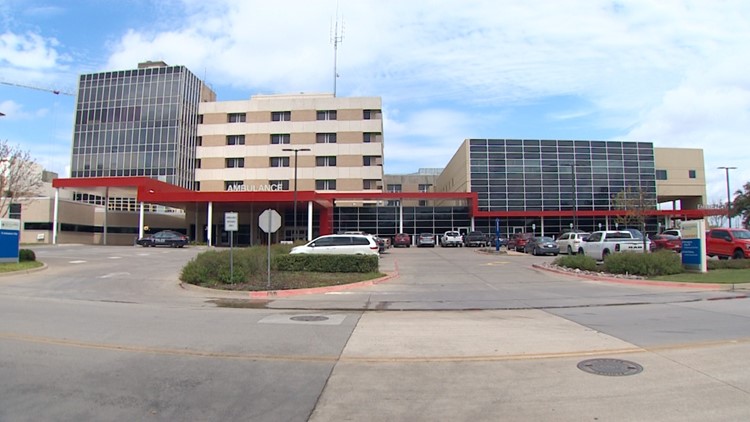Cancer is the second leading cause of death among women in the United States, and breast cancer is the second most common cancer in women. Several factors can affect what type of screening you need and when you need to get one done. To help clarify breast screenings, Allan R. Katz, MD, FACOG, OB-GYN with UT Physicians and professor in the Department Of Obstetrics, Gynecology, And Reproductive Sciences at The University of Texas Health Science Center at Houston (UTHealth Houston), sheds light on this important breast health topic. When cancer is detected early, you have the most options for treatment. Without a doubt, early detection can save lives.
Breast screening guidelines are different based on your risk
For screening purposes, women fall into two risk categories for breast cancer — average risk and high risk. Each risk category comes with different screening recommendations.
“A woman is considered at average risk if she does not have a personal history of breast cancer, a strong family history of it, chest radiation therapy, or a genetic mutation that would increase her risk,” said Katz.
Screening recommendations for women who are at average risk are below:
- Ages 40 to 44 – mammogram screenings are optional
- Ages 45 to 54 – annual mammograms are recommended
- Ages 55 and older – mammograms can be done every other year or annually
- Screenings can continue as long as you are in good health
Women who are at high risk for breast cancer have several possible risk factors. These include having radiation therapy to the chest area between the ages of 10 and 30, or being diagnosed or having an immediate family member diagnosed with a BRCA1 or BRCA2 gene mutation, Li-Fraumeni syndrome, Cowden syndrome, or Bannayan-Riley-Ruvalcaba syndrome.
Starting at age 30, both a breast MRI and a mammogram are recommended annually for women who are considered high risk. Those with genetic risks for breast cancer may need to be screened as early as age 25. Consult with your physician for more information.
Types of screening tests
You can get screened for breast cancer at a clinic, hospital, doctor’s office, imaging center, or even an equipped mobile van. The main purpose of a screening is to check a woman’s breasts for any signs or symptoms of cancer. When an issue is diagnosed early, it is easier to treat. The screening you need differs based on your age, health, lifestyle, or other personal risk factors.
“There are different types of screenings available, and each one has its benefits and risks,” said Katz. “Talk to your doctor to discuss what screening option is best for you.”
Mammogram
A mammogram is a digital X-ray of the breast that can find lumps that may be too small to be detected or felt during a self-examination. While this type of screening will not find everything, it is still considered the best way to screen for breast cancer. These digital 2D mammograms are standard. In comparison, 3D mammograms utilize the latest technology in digital breast imaging and improve detection capabilities.
Breast ultrasound
An ultrasound uses sound waves to detect changes in the breast that may be harder to identify from a mammogram, such as differentiating between fluid-filled cysts versus a solid mass.
Breast MRI
An MRI uses radio waves and strong magnets to screen for breast cancer that cannot be seen in a mammogram. MRIs are used as an additional screening tool for women who are considered high risk, alongside a mammogram.
Self-examination
A breast self-exam helps you understand the usual look and feel of your breasts. If you notice a change that seems abnormal, speak with your doctor. Self-exams are not considered a reliable way to detect breast cancer. But, it is important to be familiar with and aware of the normal consistency of your breasts.
Early detection can save your life and your breasts
Screening cannot prevent cancer from happening. If breast cancer is detected early, you have more treatment options available.
A breast cancer screening is quick
The screening process only takes about 15 to 20 minutes. A mammogram can be uncomfortable for some, but your test results are ready quickly. Knowing your current breast health can be reassuring, and if there is a problem, finding out early increases the treatment options you have.
Mammograms are covered by most insurance
Medicare, Medicaid, and most insurance companies cover the cost of mammograms. Please check with your insurance company to determine which locations or types of screenings are covered.
If you don’t have insurance or your current insurance doesn’t cover screening, you may be eligible for free or low-cost screenings in your area. Visit CDC.gov for more information.
Men at high risk should get breast cancer screenings too
Even though it is rare for men to get breast cancer, the most common kinds of cancer in women can also occur in men. Generally, breast cancer screenings are not recommended for men unless they have a BRCA1 or BRCA2 gene mutation.
Getting your test results
If your results are normal, you are all clear. You can schedule your next routine screening. If you had an abnormal screening result, there is a good chance that it is noncancerous or just normal breast tissue. Your doctor will have recommendations of what to expect for follow-up steps to get you diagnosed and treated.
“Most of the time, abnormal results do not turn out to be breast cancer,” said Katz. “The only way to know for certain is by performing follow-up tests to rule out or confirm a diagnosis.”



